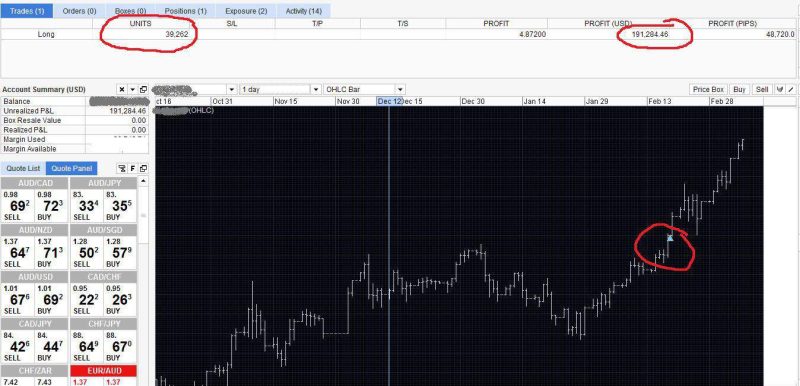Forex trading, also known as foreign exchange trading, is the decentralized global marketplace where various currencies are bought and sold. Traders engage in this dynamic market to speculate on currency fluctuations and make profits. However, successful forex trading requires more than just technical analysis and fundamental indicators. Understanding market sentiment is a crucial aspect that can greatly impact trading decisions and outcomes. In this article, we will explore the concept of market sentiment, its significance in forex trading, and effective strategies to incorporate it into your trading approach.
What is Market Sentiment?

Market sentiment refers to the overall attitude or prevailing mood of traders and investors towards a particular financial market or asset. It is influenced by various factors, including economic indicators, political events, news releases, and investor behavior. Market sentiment can be categorized as bullish (positive), bearish (negative), or neutral. Understanding and analyzing market sentiment can provide valuable insights into the potential direction of a currency pair and help traders make informed trading decisions.
Market sentiment is often driven by emotions such as fear, greed, and optimism. Traders' collective sentiments can create trends, momentum, or reversals in the market. By assessing market sentiment, traders can gauge the prevailing market psychology and identify potential trading opportunities.
Also Read: Forex Trading and Sustainable Investing
The Role of Market Sentiment in Forex Trading

Market sentiment plays a significant role in forex trading as it can drive market trends and impact currency prices. When market sentiment is positive, traders are generally optimistic about a currency's prospects, leading to increased buying activity. This demand can drive up the currency's value. Conversely, when market sentiment is negative, traders tend to sell off the currency, causing its value to decline. Understanding the prevailing sentiment can help traders anticipate potential market price movements and adjust their trading strategy accordingly.
By incorporating market sentiment analysis into their trading approach, traders can align their positions with the prevailing sentiment, increasing the probability of successful trades. Market sentiment can act as a confirming factor for technical analysis or provide early signals for potential trend reversals.
Key Indicators of Market Sentiment

#1. Economic Data
Economic indicators such as gross domestic product (GDP), employment reports, interest rates, and inflation rates can influence market sentiment. Positive economic data often boosts market sentiment, while negative data can dampen it. For example, strong GDP growth can generate positive sentiment, attracting investors to a currency.
#2. News and Events
Major news events, geopolitical developments, and central bank announcements can significantly impact market sentiment. Traders need to stay informed about these events and understand how they might shape market sentiment. For instance, political instability or unexpected policy decisions can create uncertainty and affect market sentiment.
#3. Technical Analysis
Technical indicators and chart patterns can help identify shifts in market sentiment. Traders often look for patterns such as bullish or bearish reversal formations, breakouts, or divergences to confirm or anticipate changes in sentiment. Technical analysis combined with sentiment analysis can provide a more comprehensive understanding of the market.
#4. Sentiment Indicators
Several sentiment indicators, such as the Commitment of Traders (COT) report, can provide insights into market sentiment. The COT report analyzes the positions of different market participants, including institutional traders and large speculators. By examining the positioning of these traders, one can gauge the overall sentiment in the market. Other sentiment indicators include surveys, sentiment indexes, and social media sentiment analysis.
Strategies for Trading Based on Market Sentiment

#1. Trend Trading
Traders can align their positions with the prevailing market sentiment. If sentiment is bullish, traders may look for buying opportunities, anticipating an upward trend. Similarly, if bearish sentiment, traders may consider selling opportunities, anticipating a downward trend. Trend trading strategies aim to capitalize on sustained movements in line with sentiment.
#2. News Trading
Traders can capitalize on news releases by monitoring market sentiment before and after the release. Positive news can boost sentiment, making it an opportune time to enter long positions. Conversely, negative news may create short-selling opportunities. It is important to exercise caution during news events as market reactions can be volatile and unpredictable.
#3. Sentiment Indicators
Incorporating sentiment indicators into trading strategies can provide additional insights. For example, monitoring the COT report can help identify potential reversals when extreme positioning occurs. If the majority of traders are already positioned in one direction, it may suggest a sentiment extreme and a possible reversal in the near future.
#4. Contrarian Approach
Some traders adopt a contrarian approach, going against prevailing sentiment. When sentiment becomes extremely bullish or bearish sentiment, contrarian traders may look for potential reversals in the market. This strategy involves identifying sentiment extremes and taking positions that align with an anticipated reversal. However, contrarian trading requires careful analysis and risk management, as it goes against the prevailing sentiment.
Conclusion:
Market sentiment is a critical element in forex trading that should not be overlooked. By understanding and analyzing market sentiment, traders can gain valuable insights into market trends, identify potential trading opportunities, and enhance their overall trading strategies. However, it is important to remember that market sentiment is just one piece of the puzzle, and traders should combine it with other fundamental and technical analysis tools to make well-informed trading decisions. Keeping abreast of current market sentiment and incorporating it into your trading approach can significantly improve your chances of success in the dynamic world of forex trading.
FAQs: Forex Trading and Market Sentiment
How does market sentiment affect forex trading?
Market sentiment plays a significant role in forex trading as it influences the buying and selling behavior of traders. Positive sentiment can lead to increased demand for a currency, driving its value higher. Conversely, negative sentiment can trigger selling pressure, causing a currency's value to decline. Understanding market sentiment helps traders anticipate potential price movements and adjust their trading strategies accordingly.
What are some indicators of market sentiment in forex trading?
There are several indicators of market sentiment in forex trading. Economic data, such as GDP growth, employment reports, and inflation rates, can impact sentiment. Major news events, geopolitical developments, and central bank announcements also influence sentiment. Additionally, technical analysis tools like chart patterns and sentiment indicators such as the Commitment of Traders (COT) report provide insights into market sentiment by analyzing the positions of different market participants.
Can market sentiment be used as a standalone strategy in forex trading?
While market sentiment is an important factor in forex trading, it is generally not recommended to rely solely on sentiment as a standalone strategy. Market sentiment should be used in conjunction with other technical and fundamental analysis tools to make well-informed trading decisions. Combining sentiment analysis with technical indicators, trend analysis, and risk management strategies can increase the effectiveness of trading strategies and improve overall trading outcomes.
How can traders incorporate market sentiment into their trading approach?
Traders can incorporate market sentiment into their trading approach in various ways. One approach is trend trading, where traders align their positions with the prevailing sentiment to capitalize on sustained market movements. News trading involves monitoring sentiment before and after news releases to take advantage of short-term opportunities. Sentiment indicators, such as the COT report, can provide insights into market sentiment for more informed decision-making. Lastly, some commercial traders adopt a contrarian approach, looking for sentiment extremes as potential signals for reversals in the market.























